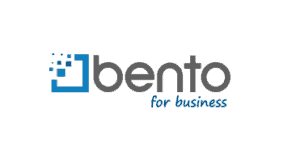What is a line of credit and how does it work?
The definition of a line of credit or LOC is an agreement between a financial institution and a customer that allows the customer to borrow up to a set amount of money. LOCs may be available to consumers and businesses.
Unlike loans, lines of credit allow you to borrow up to the credit limit. When you make payments for the amount that you have spent so that the balance goes down, you can borrow up to the credit limit again.
What is the difference between a loan and a line of credit?
While LOCs allow you to borrow money when you need it, they are not the same as a regular loan. A regular loan is for a set amount. When you pay off the balance, the loan ends. You will not be able to borrow more money from a loan without submitting a new credit application.
Loans begin accruing interest as soon as they open. When you define line of credit, you will learn that it does not accrue interest once issued. Instead, you will only pay interest when you borrow money from lines of credit on the amount that you draw.
What qualifies as a line of credit?
To explain a line of credit, you will not receive a lump sum of money that you begin repaying when you get credit lines. Instead, you will be given access to money up to a set credit limit. Lines of credit may be secured or unsecured. Some types of secured LOCs include the following:
- Home equity lines of credit
- LOCs secured with savings accounts
- LOCs secured by CDs
LOCs can also be unsecured. Personal LOCs or business LOCs are available through a bank or credit union. There are also some unsecured LOCs that are available online. Financial institutions and lenders that offer LOCs will consider your credit before agreeing to extend them to you. It is a good idea for you to work to raise your credit score before you apply for one so that you can get better terms and rates of interest.
Is a line of credit a good idea?
A Line of credit can be a good option in certain situations such as when you have multiple credit cards with high rates of interest. In that case, you could open one and use it to pay off your high-interest credit cards. They may also be a good option if you will need to make repeated outlays of cash without knowing the total amount in advance.
However, a LOC can also present some dangers. Some people open LOCs to repay credit card debts. They then run up the balances on their cards again and are left with even more debt. When you secure a LOC with your home, you can end up losing it if you default on your payments.
How does a line of credit affect your credit score?
LOCs can affect your credit score in a few ways. Your credit utilization impacts your score, the ratio of your credit that you use to the total amount that is available to you. If you consistently keep a high balance on your LOC, you will have a poor credit utilization rating, which can cause your score to drop.
It is also important for you to make certain to make your payments on time. If you pay late or miss a payment, your credit score may drop by up to 80 points. If you do not use your LOC, your lender may cease reporting on it to the credit bureaus. If you have one, it is best to keep it active and to make certain only to borrow what you can afford to repay soon. If you do this, it can help to raise your credit score.
What is the difference between a business line of credit and a personal line of credit?
A business line of credit functions similarly to a personal line of credit, however, business LOCs may have higher credit limits than personal LOCs. Secured business lines of credit may be secured against business assets while a personal LOC becomes secured against personal property.
What about home equity lines of credit?
A home equity line of credit is a type of personal LOC secured against your home. It may provide you with access to the equity that you have in your home up to a certain amount. If you default on a HELOC, you are likely at risk of foreclosure. This depends on the bank or credit union issuing the line of credit.
How can you use a line of credit to your advantage?
A LOC may be used to your advantage in a few different types of situations. If it has a lower interest rate, you can use it to consolidate your high-interest unsecured debt to pay it off as long as you can do so responsibly.
If you are self-employed and are experiencing some short-term cash flow problems, a LOC can help you to get through the leaner times. A home equity line of credit could benefit you if you use it to complete needed home improvement. If you are starting a business and need access to money to purchase inventory, a LOC can also come in handy.
Is a line of credit the best for you?
If you are considering whether a personal line of credit is a right option for you, you might be weighing getting one against getting a loan. There are some situations in which it might make more sense for you to choose a LOC instead of a loan such as the following:
- You need to make a major home improvement
- For overdraft protection
- You are uncertain about how much money you will need
- You have good credit
- You are a business that needs payment flexibility
- You are a business that accesses cash on an ongoing basis
Is a line of credit considered debt?
A LOC provides you access to funds, but it is not the same as a loan. Technically, you might count it as available credit rather than debt until you begin to use it. The amount that you use from your LOC is counted as debt.
The Financial Accounting Standards Board looks at LOCs differently, however. It may view LOCs as short-term debt instruments and classify them as liabilities on your balance sheet.
Which is better to use a line of credit or a loan?
There are situations in which choosing a loan versus a LOC is a better option. If you know exactly how much money you will need, a loan may be a better choice for you.
If you need flexible access to funds, a LOC may be a good choice. It can also be helpful if you are uncertain of how much money you will ultimately need or have ongoing needs to access cash for your business. Finally, if you are an individual, a LOC might be a good option if you need to make a large purchase such as paying for major home improvement.
The difference between a secured and unsecured line of credit
It is important for you to understand the difference between an unsecured and a secured line of credit. Any assets or collateral do not secure an unsecured line of credit (or unsecured lines). It’s often reserved for people or businesses that are at lower risk and who have good credit scores. Because an unsecured credit line carries more risk for lenders, they often will charge a higher line of credit interest rates.
A secured line of credit gets secured with business assets or personal assets, which means that some of the risks transferred to the borrower. If you default on a secured credit line, the lender can foreclose on the assets that the line of credit was secured with. Secured credit lines generally have a lower line of credit interest rates.
Primary uses for lines of credit
Credit lines have uses for many things. However, there are certain situations in which it is a good idea to use them and others when it is not. Some examples of situations in which it might be smart to use LOCs include the following:
- Completion of home improvement projects
- Projects that have funding challenges
- Self-employed with an irregular income
- Emergencies
- To take advantage of business opportunities
- Overdraft protection
Some examples of situations in which it is not a good idea to use a LOC include the following:
- Poor credit history
- Variable interest rates
- To fund one-time, single purchases
It is important to recognize that unsecured LOCs are essentially revolving lines of credit that work similarly to credit cards. Many of these revolving lines of credit charge variable interest rates, and you should take this into account before you decide to apply for one.
Are they tax deductible, and what fees incur with each option?
One type that is tax deductible is a HELOC. You can deduct the mortgage interest that you pay for your payments to your HELOC. Others are not tax deductible, however.
HELOCs may charge low fees relative to mortgage closing costs. The application fees for a HELOC may range from $50 to $100. Some lenders also charge annual fees of around $50 for your HELOC. Personal LOCs that are unsecured may not charge upfront fees, but they may charge annual fees of up to $50.
The difference in interest, payments, early repayments, and penalties between lines of credit and loans
Several differences are important for you to understand between LOCs and loans. When people say loan, they normally are referring to installment loans. These are loans for specific amounts, and they have fixed interest rates. The payments are fixed and set at regular periods for set durations. Most installment loans do not charge any penalties for early repayments.
LOCs have variable interest rates, and the rates may be higher than loans, depending on your credit. Your payment amount may vary depending on the interest rate. You can make minimum payments to pay interest but you might be charged penalties for late payments or missed payments.
Alternative to a LOC
The Bento for Business Visa debit card may be a good alternative or complement to a business LOC. The cards offer several features that can help businesses to get their expenses under control and to prevent fraud. Unlike LOCs, using debit cards will not add to your debt, and they also do not incur interest charges.
Businesses can restrict how the cards usage and how much each employee can spend with the cards. They also can limit the use of the cards to specific vendors or suppliers. Since they are not credit cards, you do not need to submit a credit application or have your credit checked. Bento is a leader in the industry and offers companies a free 60-day trial, and you can request a demo to see how the cards might work for you. To learn more, call 866-220-8455 to speak to a customer service representative.






